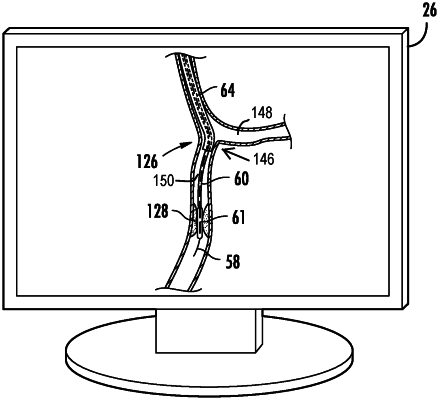| CPC A61M 25/0105 (2013.01) [A61B 34/30 (2016.02); A61B 2017/00243 (2013.01); A61B 2034/301 (2016.02); A61B 2090/376 (2016.02); A61M 25/0113 (2013.01)] | 14 Claims |

|
1. A method for controlling movement of a first percutaneous device comprising:
generating a control signal based at least partly on a user input via a control, the user input indicating a guiding or steering of the first percutaneous device;
moving the first percutaneous device relative to a structure being traversed by the first percutaneous device via an actuating mechanism configured to engage and to impart movement to the first percutaneous device, in response to the control signal; and
slowing movement of the first percutaneous device via the actuating mechanism as an identified point on the first percutaneous device approaches an identified point on the structure, wherein the control signal causes the actuating mechanism to slow movement by changing speed of the first percutaneous device based on the guiding the first percutaneous device indicated by the user input and as a function of a distance to the structure, the function being at least one of a linear function, a non-linear function or a step function,
wherein the first percutaneous device is configured to guide a second percutaneous device to a desired position in a vasculature, wherein the second device is at least one of a guide wire, a guide catheter or a working catheter,
wherein the movement of the first percutaneous device is controlled by actuators provided in the actuating mechanism, the actuators being provided at a proximal portion of the first percutaneous device, wherein the speed of the first percutaneous device is a function of a magnification level of an image displayed on a display device.
|